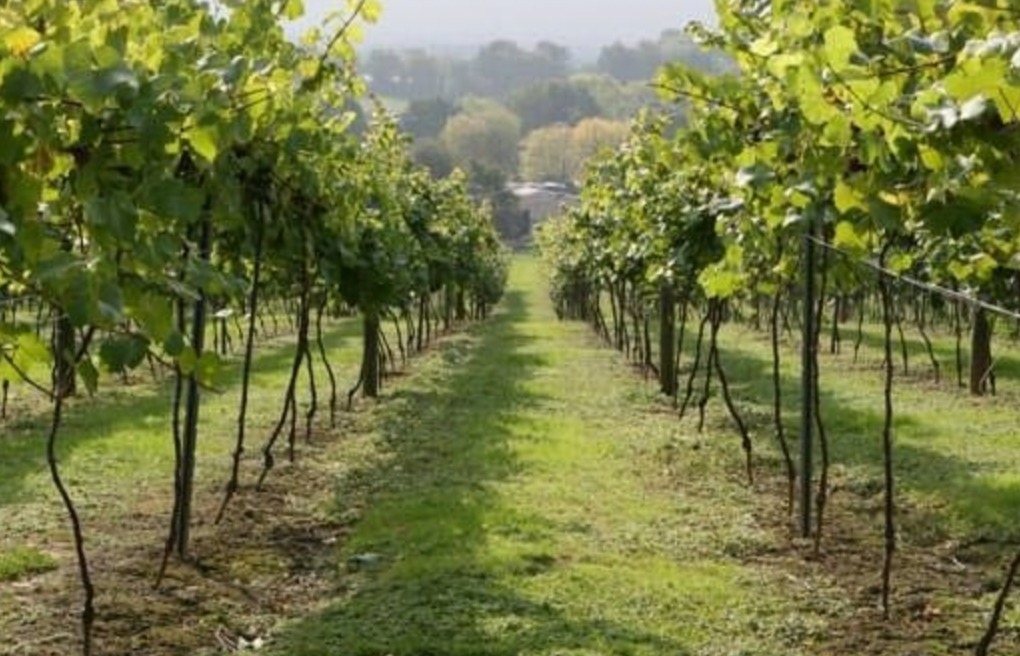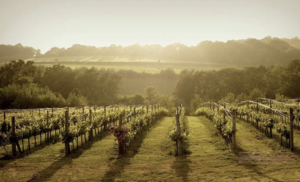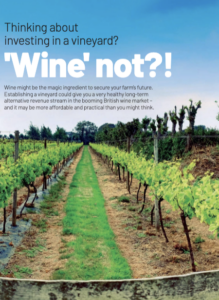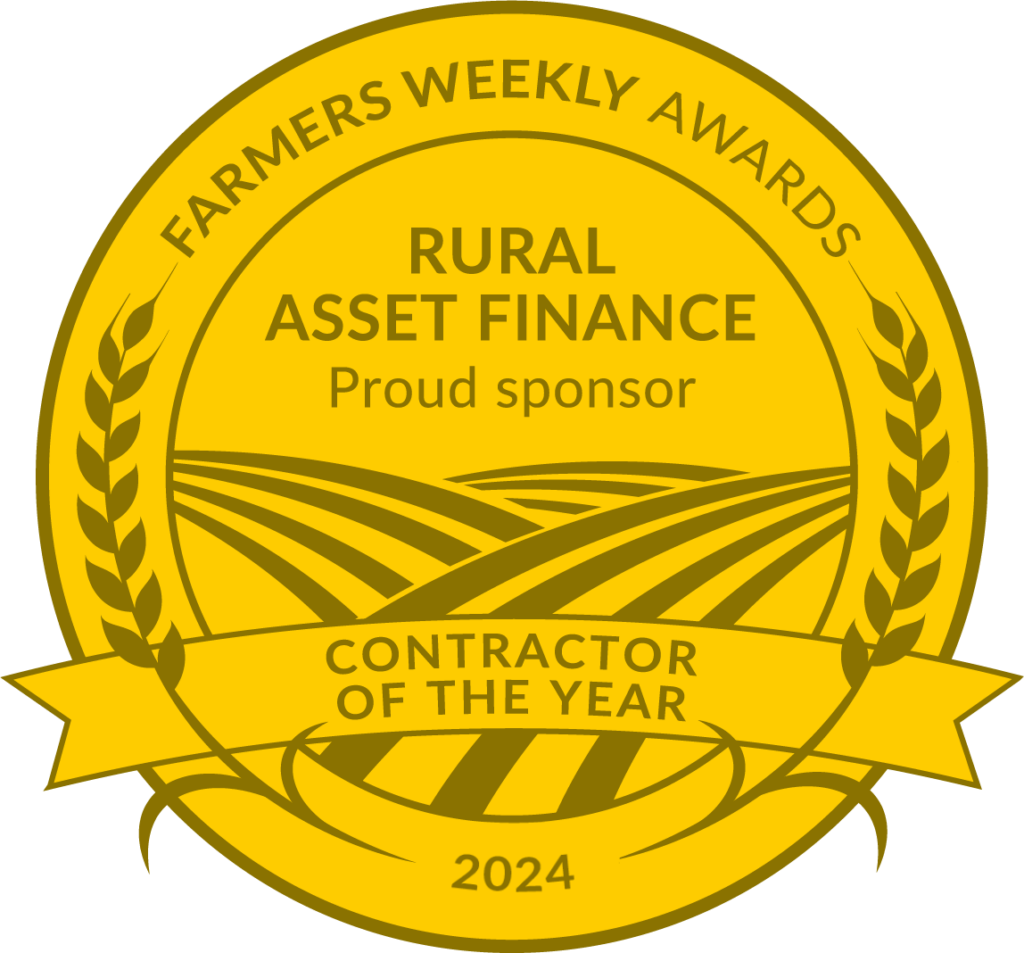Grape expectations – how to create your own vineyard!

Want your own vineyard? Wine not?
WINE could be the magic ingredient to secure your farm’s future. Establishing a vineyard could give you a very healthy long-term alternative revenue stream in the booming British wine market – and it’s more affordable and practical than you might think.
For a start, viticulture is one of the fastest growing sectors in UK farming. The demand for British wine is booming – a combination of Brexit, lockdowns and a public desire to buy more UK-grown produce has seen sales soar nearly 70% in the past two years, from 5.5million bottles in 2019 to 8.3million in 2021, according to WineGB. Some commentators have forecast that by 2040, annual sales of British wine could top £1billion. And it’s not just Brits who are buying – in 2019 10% of British wine was exported, mainly to customers in the US and Canada.
We are seeing more and more land owners are taking advantage of this trend. Britain’s vineyards cover twice as much land (3,800ha) as they did eight years ago. A record three million vines were planted in the 12 months before the pandemic and even as Britain emerged from the worst effects of Covid, farmers still planted an impressive 1.4million in 2021.

So why not join them? It makes sense for existing farmers to diversify into viticulture, especially as many will have the necessary land. With the right financial support in place to help manage your cashflow between start-up costs and your first harvest, your vineyard could prove an invaluable investment to help your farm survive and thrive for generations to come; either by directly farming the crop or leasing the vineyard out to another established producer who is looking to expand.
“The key to a successful vineyard is cashflow management,” says Matthew Smart, founder of rurallender Rural Asset Finance. “You’re investing in a new project, so there are start-up costs and there will be a wait until your first harvest. But managed correctly, this investment will pay you dividends down the line either by running the business yourself or leasing out the vineyard to someone else – especially given that British wine will get more and more popular over the next decade.”
Financing such a project can be very straightforward. Some lenders will set up a loan secured against your land, meaning you don’t need to put up other security. “For instance, we can use this model to fund your upfront costs on a five-year interest only loan,” says Matthew, whose company also offers hire purchase and leasing loans on horticultural machinery, making Rural Asset Finance almost unique in offering finance on land and equipment at the same time.
“The right finance is important, because it can cost from £8,000-£12,000 per acre to establish a vineyard. You’ll need trellising and machinery for canopy management, irrigation, maintenance and harvesting if you are going to run the vineyard yourself , and while many farmers – particularly fruit farmers – will have equipment adaptable to the task, the size and layout of your vineyard may require more specialist machinery such as compact tractors for the greater efficiency.

“Whoever you choose, you need a lender who is flexible,” says Matthew, whose company has funded numerous large scale fruit-growing projects from polytunnels to vast commercial glasshouses. “It’s important to find a lender with strong knowledge of how land-based businesses work, someone who understands your business, meaning they can offer you fixed rate, interest only loans for long enough for you to establish your crop.”
So with finance straightforward, what else to prospective vintners need to know?
LAND
A field with a south/south-easterly aspect will yield the best crop, preferably not too high – which can limit the vineyard’s temperature – or too close to the sea, as this potentially makes the air too salty.
A slope is preferable as it maximises both sunlight and drainage, but you can grow vines in a flat field if you have a water course for drainage. Vines grow on most soil types, although sandy gravel over chalk works best. Clay holds nutrients and retains heat well but again, you may need to install drainage.
THE WAIT FOR RETURNS
As Matthew says, you need to bear in mind all your cost will be up front and there will be a long wait for returns. Most vines will produce some grapes three years after planting, but you’ll probably have to wait five for a full yield. This means you’ll likely get no financial return for at least five years – but with British wine sales on their steep upward curve, planting in the next 12 months could make you well placed to take full advantage of the coming boom.
PERMISSIONS AND CHANGE OF USE
Converting existing farmland into vines is not generally an issue, but it’s worth bearing in mind that smaller sites that have not been cultivated are protected by Environmental Impact Assessment (EIA) regulations. Changing the use of such land to viticulture will require permission from Natural England through an EIA screening decision.
In addition, all vineyards exceeding 0.1 hectares must be registered with Wine Standards within six months of planting. This place them on the UK Vineyards Register, produced by the Food Standards Agency.
And of course if you’re going to run the business yourself, bottling and selling your own wine, rather than supplying grapes to a supplier, or leasing the yard to another grower, you may need planning permission to build facilities to do this, or to change the use of existing buildings.
INSURANCE
Many general farm insurance policies will cover vineyards, but you need to check your individual policy to see if you are covered. There are few specific clauses around vineyards that don’t already cover existing fruit crops.

TOURISM
Your diversification could stretch beyond growing the grapes or even making the wine. Nearly 5,000 tourists visit British vineyards every year, giving owners a lucrative sideline in tours and wine-tasting experiences.
“The huge and growing demand for English wine is offering enormous opportunity to farmers looking for a successful way to diversify,” says Matthew. “With the ending of CAP subsidy, more and more are needing to find an alternative revenue stream. It’s really exciting to know that British farmers are able to compete in such a fast-growing market, and that we’re helping them to do that.”
So establishing your own vineyard could be well worth investigating. Who knows? Your future could be sparkling!
This feature appeared in the first edition of Fruit & Vine, October 2022. https://issuu.com/fruitandvine/docs/fruit_and_vine_issue_1/55

